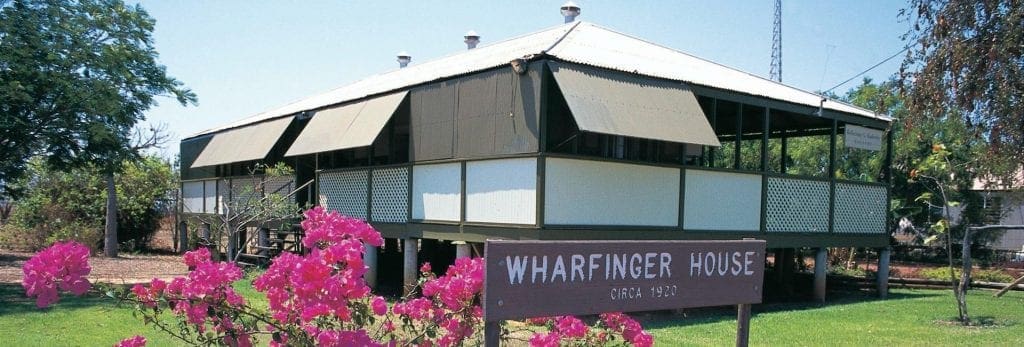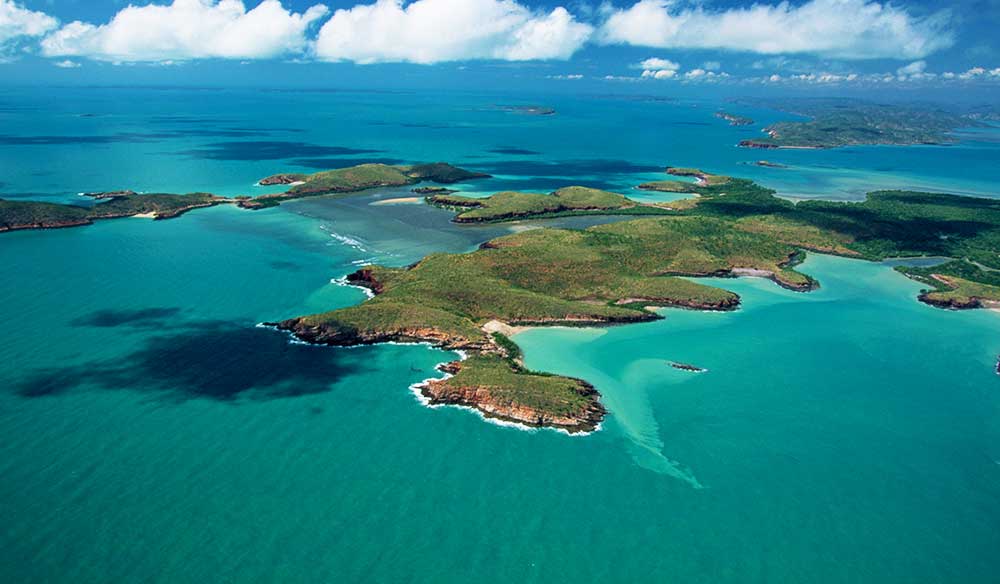
Attractions in Derby
The Derby Wharf and Jetty

One of the really interesting attractions in Derby is the Wharf and Jetty.
The first wharf, built in 1894, was a wooden T shaped structure. It was located at the northern end of the present steel and concrete jetty. The wharf was linked to the town of Derby by a horse drawn tramway. It crossed the mud flats via a causeway where the present day road is located. Wool and pearl shell were the major exports in the early days. In 1964, when the new jetty was built, live cattle were exported. Fuel, oil and provisions were the main imports. The last passenger ship visited in 1973 .
The Jetty is a popular place from which to view the stunning sunsets over King Sound, or to fish. Silver cobbler, shark, golden grunter, north west salmon and mud crabs are caught on the incoming tides. These tides are Australia’s highest and the second highest in the southern hemisphere.
Wharfingers House Museum

One of the great attractions in Derby is Wharfingers House Museum.
The history of the Wharf and the demise of the steam ship, the SS Colac, continues in Museum displays here. The Museum is devoted to the communications history of the town. Displays feature the shipping, telecommunications and aviation history of the area. There are also small displays on fossil mud lobsters and termites.
The building is a fine example of the prefabricated wooden housing of the 1930s. It was well adapted for living in a tropical climate without the benefits of air-conditioning. It was restored in 1988 as part of the Bi-Centennial Project.
Opposite the Museum is one of the oldest buildings in Derby. This is the old Wool Shed, for the export of goods prior to 1964. The import shed, where goods imported were stored for collection was demolished in 1998. The space was needed to make way for a direct route to the wharf.
The horse drawn tramway extended from the Jetty down Loch Street as far as the King Sound Hotel site. Nearby was a quarry that was used to supply stone for the causeway across the mud flats. The tramway finished near McGovern and Thompson’s Store, (now Woolworths).
Would you like to follow up on the story of the SS Colac? View the anchor and propeller of the vessel in the Lions Park near the Derby Civic Centre in Loch Street. The remains of the vessel can be viewed at low tide out from the end of the Derby airport runway via a fixed wing or helicopter flight. Access to the wreck is not possible from the land.
Where: Corner of Elder and Loch Streets. Open on request. (Call at the Derby Visitor Centre during opening times for a key.)
The Buccaneer Archipelago

The Archipelago is 35 minutes flying time from Derby. It consists of up to 1,000 rugged, sparsely vegetated islands, with patches of rainforest in moist areas. Secluded beaches and a fringe of mangroves have formed where silt has accumulated.
The islands are rich in bird and animal life. 118 species of bird and 11 species of snake recorded on Koolan Island alone. A tidal range, up to twelve metres is experienced, and creates such phenomena as the horizontal reversible waterfall. This is a must see for any visitor.
Rock art on the islands reflects the occupation by Aboriginal people. Isolated graves are testimony to the dangers of pearling at the turn of the century.
The scars of mining for iron ore can be seen on Koolan and Cockatoo Island. In addition, sea safaris leave Derby on a regular basis between April and November to explore the West Kimberley Coast.

